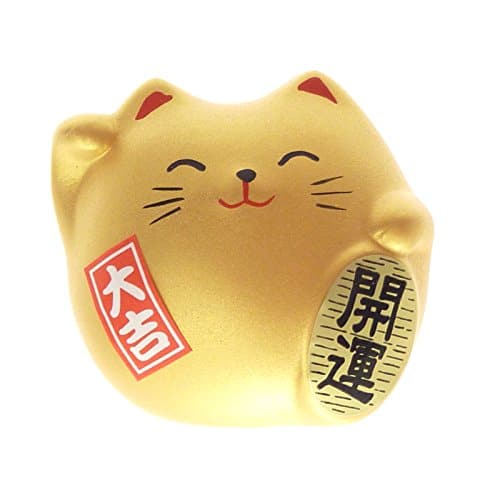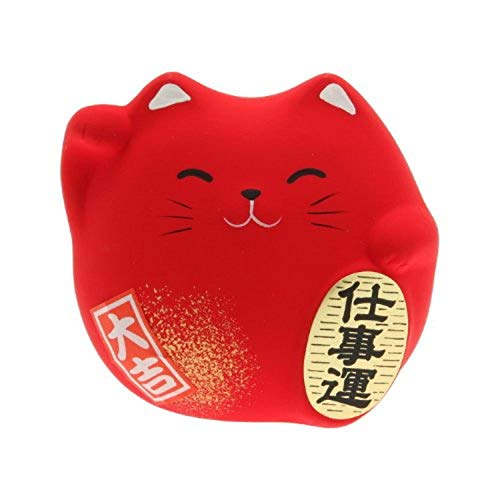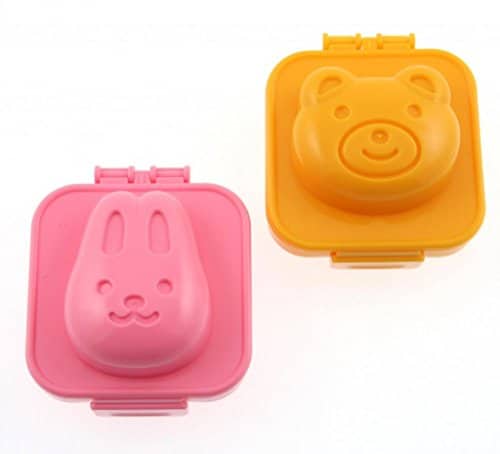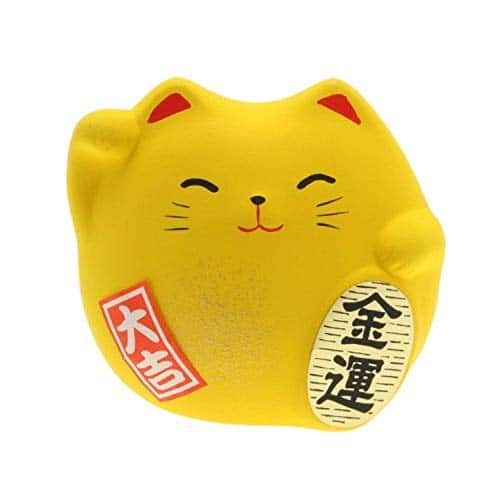From the heart of Japan’s illustrious storytelling tradition comes Kotobuki, a term synonymous with celebrations of longevity and congratulations. However, it also refers to a mythical chimera displaying an extraordinary array of the Chinese zodiac animals. This creature is more than just a figment of the imagination; it is a cultural treasure trove. Today, we’re diving deep into the magical world where Kotobuki creatures not only captivate our senses but also forge an indelible mark in the collective memory of mythical connoisseurs and aficionados alike.
Unveiling the Enchantment of Kotobuki Mythical Creatures
Kotobuki’s craft does more than immortalize Japanese mythos; it rejuvenates them, giving old tales a fresh lease on life in our homes and hearts. By blending traditional narratives with aesthetically stunning craftsmanship, these figurines and items invite us to revisit and revere the tales of old.
Kotobuki Maneki Neko Charm Kai un Collectible Figurine, Fortune, Gold

$11.24
The Kotobuki Maneki Neko Charm Kai un Collectible Figurine in Fortune Gold is a symbol of prosperity and good fortune, meticulously crafted to grace your space with its radiant presence. This striking figurine is coated in a lustrous gold finish, capturing the essence of wealth and success that the Maneki Neko, also known as the “beckoning cat”, is known to attract. Designed with intricate details, the cat’s raised paw is believed to invite good luck into homes and businesses, making it a perfect enhancement for anyone seeking a touch of fortune or an auspicious gift for loved ones.
At a convenient size, this collectible fits seamlessly on shelves, desks, or in any area where a charm might be needed to attract positive energy. The Kotobuki Maneki Neko is not only a powerful talisman but also an exquisite piece of art, showcasing traditional Japanese craftsmanship and aesthetic. Each figurine also includes a small bell collar, adding a sense of playfulness and authenticity to the piece, while its regal golden sheen is sure to draw the eye and capture the heart. Whether for a collector, a believer in luck and prosperity, or simply an admirer of beautiful objects, this Fortune Gold Maneki Neko charm is a timeless treasure.
The Legendary Ryūjin: Japan’s Dragon Deity of the Sea
Whispers of the sea god Ryūjin ripple through the waters of Kotobuki’s product lines like a powerful undercurrent. Esteemed as an emblem of power and a harbinger of prosperity, Ryūjin reigns supreme within the Kotobuki collection. Diving into the company’s range, we see a figure that varies from classic depictions; the materials shimmer with the luster of the ocean, capturing the deity’s essence in a wave of innovative design. Kotobuki’s Ryūjin isn’t merely a product; it’s a piece of the sea’s soul, coveted for its elegance and cultural resonance, as rich and deep as the stories from which it sprung.
Yet, this isn’t just about the might of myth; it’s about the craft that cradles this might in material form. A key detail separating Kotobuki’s Ryūjin from its mythical counterpart is the use of modern artistry to embolden a traditional figure, turning figures into more than decor — they become conversational keystones in homes worldwide. Just check out the raving customer reviews, showing how the company has netted a school of fans!

The Mystical Kirin: A Fusion of Serenity and Strength
Behold the Kirin – Kotobuki’s representation of a creature so serene it strides on clouds, yet so formidable it can quell the wrath of the fiercest dragon. This mythical being exudes an aura of peace, and the Kotobuki Kirin figurines echo this harmoniously with their detailed, soft lines, and tranquil expressions.
The Kirin, according to customer testimonials, seems to serenely gallop beyond expectations, resonating a sense of calm to its admirers. Enthusiasts often note how the symbolism of the creature inspires them, proving that the benevolent spirit of the Kirin transcends beyond the lore, instilling a part of its mythical essence in every admirer’s life.
As we continue to chat about the Kirin, let’s not overlook how the function follows form in Kotobuki’s emblematic synthesis of serenity and might, reminding us that balance is as much a craftsmanship feat as a philosophical pursuit.
Benevolent Baku: The Dream Eater’s Modern Relevance
Now, let’s chew on the Baku’s tale, also known as the dream eater. Once a night-time legend, sworn to devour nightmares, the Baku has found new life through Kotobuki’s modern interpretations. These dream defenders have been artfully crafted to ward off the boogeymen lurking in the shadows of our sleep.
Consumers have noted how these delightful Baku pieces have become standout favorites, admired for their quality and creativity—a true testament to Kotobuki’s artistic vision. The market reception has been anything but a snooze fest, showing how these mythical beasts have gnawed their way into the dreams and shelves of people seeking a pinch of supernatural protection wrapped in an adorable package.
Kotobuki Maneki Neko Charm Shigoto un Collectible Figurine, Successful Career, Red

$8.50
Embrace the aspirational symbol of the Kotobuki Maneki Neko Charm Shigoto un Collectible Figurine, designed to beckon a successful career into your life. This vibrant red figurine depicts the beloved Japanese Maneki Neko, or “beckoning cat,” which has been a traditional emblem of good fortune and prosperity in Japan for centuries. Expertly crafted, the cat’s raised paw is an iconic gesture meant to attract success and achievement in the workplace, making it an ideal adornment for your office desk or a thoughtful gift for anyone embarking on a new career path or striving for professional accomplishments.
Not only is this collectible figurine aesthetically pleasing, but it is also imbued with cultural significance. Made from durable materials with a glossy finish, it ensures long-lasting appeal and a touch of elegance wherever it is displayed. Whether placed at home or in a work environment, the Kotobuki Maneki Neko Charm Shigoto un figurine serves as a constant reminder of your aspirations, fueling motivation and serving as a charming conversation starter about its rich cultural background and the values it represents. Indulge in the positive ambiance this delightful charm promotes, and let it guide you towards a future brimming with success and opportunity.
The Tengu: From Menacing to Mischievous in Kotobuki’s Imagery
From the mountainous terrain of myth to the modern high-rise of Kotobuki craftsmanship, the Tengu has transitioned from a fearsome deity to a more playful protagonist in today’s narratives. These mischievous figures perch on the shelves with an air of whimsy, echoing the shift from historical lore to the contemporary tastes of collectors and Japanese folklore enthusiasts.
Kotobuki has managed to walk a tightrope, balancing the Tengu’s traditional imagery with a dash of modern humor, ensuring that each piece from their collection winks at the past while grinning at the present. This fusion has tickled the fancy of many customers, who find joy in the Tengu’s lively spirit and Kotobuki’s flair for capturing cultural essence in every brushstroke and mold.

Enigmatic Nue: Kotobuki’s Take on the Chimera of Japanese Lore
Shrouded in mystery, Nue was once a shadow lurking in the backdrop of Japanese tales—a chimera lesser-known yet brimming with enigma. Kotobuki has clawed through obscurity, parading the Nue into the limelight with a collection of depictions bold enough to stir curiosity from the uninitiated and command respect from purists.
From the initial sketches to the final products, Kotobuki’s artisans employ a creative license to give shape to formlessness; the Nue defies easy characterization yet thrives in every interpretation. With items for a more niche audience, Kotobuki ensures the Nue’s roar is heard across the collectors’ savanna, echoing through a jungle of mundane.
The Inari Fox: From Sacred Messenger to Adorable Icon
In the intertwining roots of Shinto, the Inari Fox serves as a sacred messenger, a role that Kotobuki cherishes and reinterprets, infusing it with irresistible charm. From plushies that beg to be hugged to ornamental objects weaving a spell of cuteness, the Inari Fox has seamlessly transitioned from the solemn whispers of temples to the playful chatter of everyday life.
Kotobuki’s Inari Fox products honor the deity’s significance while capitalizing on the allure of its foxlike visage—straddling a line between reverence and retail, piety, and popularity. The items don’t just sell; they tell a story, bridging worlds between the sacred messenger and a symbol of joy in modern homes.
Majestic Hou-ou: The Phoenix Reimagined by Kotobuki
Among the ashes of forgotten lore, the Hou-ou, or Phoenix, rises anew, its fiery plumage rekindled by the hands of Kotobuki artisans. This isn’t just a resurrection but a reinvention, a creature reborn not only in flame but in imagination—and one that has captivated consumers.
Striking a chord with its message of hope and rebirth, Kotobuki’s Hou-ou figures resonate on a metaphorical level that flies high with buyers. Their artwork and figures, searing with passion and precision, underscore how traditions can be reimagined to lift spirits in an awe-inspiring alchemy of cultural reverence and innovative marketing.
The Cultural Tapestry Woven by Kotobuki’s Mythical Bestiary
Kotobuki doesn’t just craft trinkets; they weave an intricate cultural tapestry, adorning the modern mythology landscape while kindling a deeper appreciation for Japan’s storied past. These creatures aren’t merely merch—they’re messengers of heritage, wielding stories in tangible forms that drive the merchandising narrative forward.
Moreover, they play a pivotal role in an environment hungry for stories, becoming active participants in the lives of those they touch. Each creation maintains tradition while winking at new audiences, a delicate dance that Kotobuki executes with the poise of a crane under the moonlight.
Kotobuki Plastic Egg Mold, Rabbit and Bear

$9.98
Bring a touch of whimsy to your kitchen with the Kotobuki Plastic Egg Mold, featuring adorable rabbit and bear designs that are perfect for transforming simple boiled eggs into charming creations. This user-friendly mold is designed to be easy to use; simply place a still-warm, peeled boiled egg into the plastic mold and snap it shut. After cooling in cold water for a few minutes, your egg will emerge with the delightful imprint of a rabbit or bear, adding an element of fun to any meal or bento box.
Not only are these molds great for encouraging picky eaters to enjoy their food, but they’re also fantastic for parties, picnics, or adding a special touch to your family’s breakfast routine. Made from durable, food-safe plastic, the Kotobuki Egg Mold is both dishwasher safe and built to last, ensuring countless mornings of joyous breakfasts. Whether you’re a seasoned chef looking for a novel touch for your dishes or a parent aiming to make mealtime more exciting for your kids, these egg molds are a simple and effective tool that will bring smiles to faces both young and old.
| Subject Matter | Description |
|---|---|
| Term | Kotobuki |
| Kanji | 寿 |
| Pronunciation | ことぶき (kotobuki) |
| Meanings | 1. Congratulations, felicitations. 2. Something worthy of congratulations. 3. Long life, longevity. |
| Cultural Context | Often used in celebrations and good wishes in Japan. The kanji 寿 is also used in decorations and gifts to symbolize long life and good fortune. |
| The Kotobuki (Creature) | A legendary chimera from Japanese folklore composing parts of the twelve animals of the Chinese zodiac: |
| Chinese Zodiac Representation | – Head of a rat – Ears of a rabbit – Horns of an ox – Comb of a rooster – Beard of a goat – Neck of a dragon – Mane of a horse – Shoulders of a tiger – Arms of a monkey – Body of a snake – Eyes of a sheep – Tail of a boar |
| Classification | Yokai (supernatural creature) |
| Yokai Context | Yokai are a class of supernatural entities and spirits in Japanese folklore, which encompass a wide variety of creatures including ghosts, demons, monsters, and other phenomena. |
| Cultural Significance of Yokai | Yokai play a significant role in Japanese culture, often serving as explanations for the inexplicable and inspiring both fear and fascination. They interact with the human world and often carry moral or philosophical messages. |
| Kotobuki as a Symbol | The Kotobuki, as a creature with parts of all Chinese zodiac animals, could symbolize completeness, balance, and the bringing together of disparate elements into harmony. |
| Potential Price | N/A (Mythological entity, not a product) |
| Benefits | N/A (Not applicable to a mythological entity) |
| Note | While kotobuki itself does not come with a price or specific benefits due to its nature as a term and a mythological creature, artwork, amulets, or other items depicting kotobuki may be created as cultural artifacts and hold symbolic value in bringing good fortune or as collector’s items. |
The Enduring Legacy of Kotobuki: A Brand Synonymous with Japanese Mythos
As we reflect on Kotobuki’s journey, from their initial crafting of stories in clay and color to their current status as cultural custodians, we see a range that extends beyond mere products. The brand’s dedication to cultural accuracy and their prowess in storytelling has not only set them apart but has also set the bar high for interpreting cultural mythology in consumer spaces.
Looking ahead, it’s tantalizing to imagine where Kotobuki might venture next in their quest to blend tradition with innovation. As they continue to enshrine mythical creatures in everyday lives, their influence endures, promising that the legends of yore will continue to spark wonder for generations to come.

Kotobuki, a name once whispered in celebration, now stands as a titan in the expansive anthology of Japanese mythology—a brand that has etched its narrative into the very fabric of Japan’s legacy, ensuring that each piece, from the majestic Ryūjin to the cuddly Inari Fox, carries with it the soul of a story waiting to be told.
Best Kotobuki Mythical Creatures Reviewed
Well, buckle up, folks, ’cause you’re in for a wild ride through the magical world of kotobuki creatures! They’re as mystical as they come, and boy, do we have some tidbits that’ll knock your socks off!
Guess Who’s Joining the Kotobuki Lineup?
Okay, imagine this: you’re chilling in a kotobuki world, and who do you stumble upon? None other than the lightning-fast Ky Kiske from the realms of fiery anime battles. His electrifying presence has sparked some serious buzz around how iconic characters blend into the kotobuki lore, making fans all giddy. And speaking of surprises, you won’t believe this, but Koneko Toujou has pounced into the kotobuki universe with her sassy charm intact. From her devil-may-care attitude to her heart of gold, she’s one kotobuki creature you just can’t overlook!
When Kotobuki Worlds Collide
Now, hold on to your hats for this fun fact – there’s a rumour that a protagonist from the hit series Kyonyuu Suki nanoni Bl Kai Ni Tensei shimashita might just waltz into the kotobuki ranks! We’re talking accidental crossovers that’ll twist your brain into a pretzel with excitement. And get this, the fusion of a Roblox avatar with a mythical kotobuki beast – could you imagine? It’s as if the digital age decided to parkour right into ancient folklore, merging pixels with myths in the zaniest ways possible.
In a nutshell, this kotobuki creatures review ain’t just your grandma’s fairy tale run-through. It’s a mishmash of easter eggs and “you heard it here first” scoops that’ll keep you wide-eyed and bushy-tailed. Who knew kotobuki creatures could stir up such a storm? But hey, that’s what makes this gig so incredibly fun!
Kotobuki Maneki Neko Charm Kin un Collectible Figurine, Wealth, Yellow

$7.99
The Kotobuki Maneki Neko Charm Kin un Collectible Figurine is a charming and auspicious accessory designed to attract wealth and good fortune. Crafted with intricate details and painted in a vibrant yellow hue, this figurine embodies the traditional Japanese cultural symbol of the Maneki Neko or the “beckoning cat.” The uplifted paw of this delightful cat is said to invite prosperity into your life, making it a perfect addition to your home or office space. It is also adorned with golden accents to further symbolize the abundance and affluence it seeks to usher in.
Not just a figure of folklore, this collectible item is steeped in history with its roots deep in Japanese heritage. The Kotobuki Maneki Neko Charm is made with high-quality materials, ensuring its durability and longevity as a keepsake. Often sought after by collectors and enthusiasts of Japanese culture, this figurine comes in an attractive packaging that makes it an ideal gift for family and friends. Owning this charming yellow Maneki Neko can also be a delightful way to celebrate and manifest the intent of attaining greater wealth and success in your endeavors.
What does Kotobuki mean?
Kotobuki is a Japanese term expressing congratulations or felicitations, often associated with the celebration of longevity or a long life.
What is the Kotobuki in Japanese mythology?
The Kotobuki is a mythical Japanese creature resembling a chimera, composed of various animal parts representing the Chinese zodiac. It’s a fantastical beast with a unique appearance, combining elements like the head of a rat and the horns of an ox, symbolizing auspiciousness and prosperity.
What is Yokai?
Yokai are a broad category of supernatural entities in Japanese folklore, encompassing ghosts, demons, monsters, and other mysterious beings. They vary greatly in their nature, with some being mischievous, others frightful, and a few benevolent.
What does mugi mean?
Mugi generally refers to wheat or barley in Japanese, but it’s commonly used to denote any kind of grain.
What does Yori mean slang?
In slang, Yori typically means better or more preferable. It’s casually used to compare things, implying that one is superior to the other.
Who is the most powerful Japanese myth?
The most powerful entity in Japanese mythology is usually considered to be Amaterasu, the sun goddess and ruler of the heavens. She holds immense influence and power in the Shinto religion and Japanese lore.
Who is the Japanese god of madness?
There isn’t a widely recognized Japanese god of madness specifically. However, some mythical figures and entities exhibit traits associated with crazed behavior or cause madness in stories.
Who is the Japanese god of jealousy?
The Japanese god of jealousy isn’t a central figure in the myths. While many deities exhibit jealous traits in various stories, there’s no singular god who embodies the concept of jealousy like in some other mythologies.
Are there friendly yokai?
Yes, there are friendly yokai! Some, like the Zashiki-warashi, are known to bring good fortune to households, while others, like the Tengu, have evolved from fearsome to protective spirits. They’re not all out to get you – some just wanna be your bud.
Are yokai good or bad?
Yokai can be a mixed bag, really. They range from benevolent or mischievous to outright malevolent. Their nature depends on the individual yokai’s story, its motives, and its interactions with humans.
Is an oni a yokai?
Sure, an oni can be considered a type of yokai. These ogre-like creatures are notorious in Japanese folklore for their brutish strength and are typically seen as bringers of bad luck or as wards against evil spirits when portrayed protectively.
What does Sangoku mean in Japanese?
Sangoku has a few meanings, but in a historical context, it refers to the “Three Kingdoms” of China. However, ‘san’ means three and ‘goku’ can mean states or countries, so it can be used more generally to denote any set of three countries or regions.
What does Tsurumaki mean?
Tsurumaki means “spinning wheel” or “wind-up,” literally depicting something that’s wound up like a spring. It can be a surname or refer to an actual winding mechanism in various contexts.
What does Momoe mean in Japanese?
Momoe translates to a hundred blessings in Japanese, reflecting a wish for numerous good fortunes. It’s a name that carries a sense of hope and well-wishing.
What does jiba mean in Japanese?
Jiba, in some dialects, can be a casual, rough way to say “place” or “location.” It’s not exactly the Queen’s English and is seen as a bit rough around the edges.





















